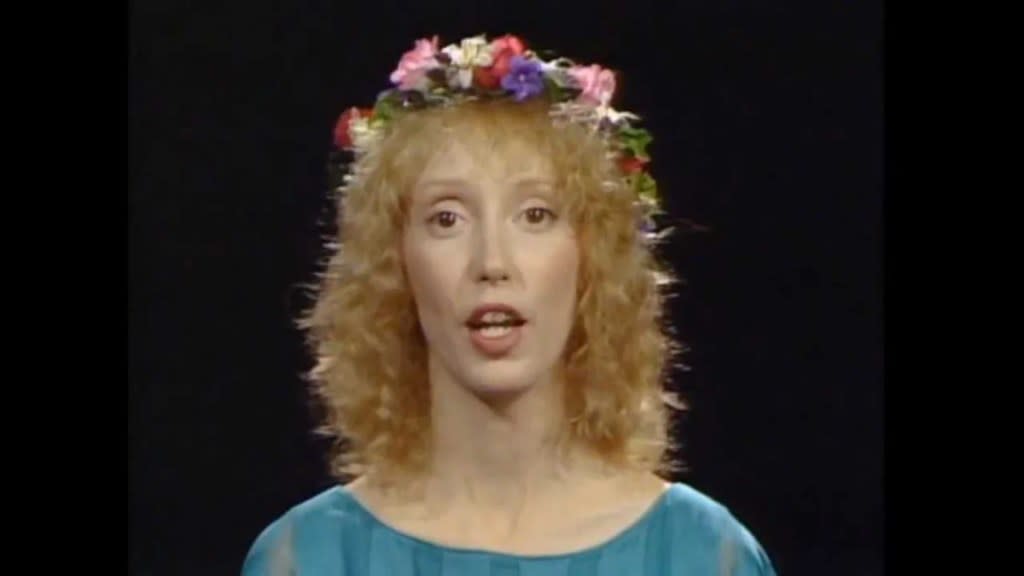With ‘Faerie Tale Theatre,’ Shelley Duvall Took Kids’ TV Seriously | Appreciation

The news that actress Shelley Duvall had died at the age of 75 inspired much heartache and commemoration from film fans the world over. The Cannes award-winning star of several Robert Altman films and one of the great scream queens thanks to Stanley Kubrick’s “The Shining” was seen as one of the most indelible faces of ’70s New Hollywood. While she had not been seen on the big screen since 2002, her legacy has long been set in stone thanks to performances in “3 Women”, “Nashville”, and “Popeye.”
Many obituaries of Duvall have focused on the films, particularly her oft-dissected performance in “The Shining” and the complicated and mischaracterized legacy it created. But Duvall was never a mere wallflower wilting in the face of tyrannical auteurs. Indeed, it was through the work that she created for television that her unique warmth and earnestness shone the most brightly.
From 1982 to 1987, “Shelley Duvall’s Faerie Tale Theatre” aired on Showtime and introduced a generation of children to the classic stories of legends like the Brothers Grimm and Hans Christian Andersen. At a time when Disney’s popularity was lagging and the market for children’s entertainment became flooded with cheaply-made toy commercials, Duvall took it upon herself to create a show (that she also hosted, executive produced, and starred in) that put the power of kids’ imaginations at the forefront.
While filming “Popeye”, Duvall was reading the fairy-tale “The Frog Prince” and she asked her co-star Robin Williams for his opinion on it. He found it to be funny and offered his talents in adapting it, should she so desire. Soon, Duvall would attract a murderer’s row of talent to “Faerie Tale Theatre,” the kind of cast that any director would sacrifice their right arm to attain. She had Gena Rowlands as the wicked witch in “Rapunzel”, Bernadette Peters as Sleeping Beauty, Mary Steenburgen as Little Red Riding Hood, and Harry Dean Stanton as Rip van Winkle (directed by Francis Ford Coppola!)
Nowadays, it’s the norm for big stars to do kids’ entertainment, whether it’s voicing a Pixar or DreamWorks character or hanging out with the YouTube stars the youth favor, but in the ‘80s, it seemed downright bizarre to imagine multi-award-winning legends of the silver screen playing dress-up in fairy tales. Yet none of these actors phoned it in. A generation of children got to be educated on classic stories from the offspring of New Hollywood thanks to Duvall.
Each of these 27 episodes begins simply enough, with Duvall introducing herself and the show in what is now the stuff of memes. The tale would then begin, with sumptuous painted backdrops and costumes, all in service of classic stories told in a straightforward manner. Many more skeptical viewers dinged the series for its often hilariously low budget. There are certainly a few moments where the sets seem to wobble, and it’s a true joy as a film lover to see the likes of Klaus Kinski and Ben Vereen ham it up for a niche program airing on the same network as “It’s Gary Shandling’s Show.” Yet it’s in that stalwart commitment to the bit where “Faerie Tale Theatre” succeeds. Nobody is half-assing it, least of all Duvall herself, who is an almost ethereal presence in these realms. A strikingly beautiful actress who already looked as though she’d fallen out of a fable, Duvall takes her duties as host and creator seriously. It’s easy to talk down to kids, but far harder to appreciate them on their own level.
“Faerie Tale Theater” certainly had its share of adult moments. There are jokes here that would have gone over the head of any child, such as when the king asks Rapunzel’s mother if she’s craving a nice pickle. There’s genuine heat between Susan Sarandon and Kinski in “Beauty and the Beast”, an episode that pays direct homage to Jean Cocteau’s version of the story through its production design and make-up (indeed, seeing artists like Klimt, Brueghel, and Rockwell referenced in the set design is worth a viewing alone, and a reminder of Duvall and her team’s commitment to the series. You wouldn’t see this in the Care Bears show.)
The series wasn’t afraid to get weird either, delving into the oddities of the source material with a keen eye and savvy comic timing. Watching Vincent Price painted like wood to play the evil queen’s magic mirror is certainly a visual that will stick with you.
What made Shelley Duvall such a magnetic performer was her blend of idiosyncrasies that made her seem both thoroughly modern and of a bygone era. She could be heart-aching but also possessed the kind of slapstick comic timing that made her a perfect Olive Oyl. Even at her most fragile, she was a singularly charismatic figure. She brought all of that to “Faerie Tale Theatre,” understanding that even the smallest roles and most seemingly frivolous stories deserved 100% from herself and her peers. Children can sense cynicism a mile away and there wasn’t a drop of that in this show. Maybe you rolled your eyes at some of the creakier jokes but you never doubted the sincerity of Duvall’s agenda.
The classic fairy tales of yore endure over the centuries when they’re treated with the reverence and slyness they deserve, and Duvall made sure a whole new generation got to be part of that history. In the era of Disney’s dominance and a vaster array of children’s entertainment, it’s easy to overlook the work that paved the way, but Duvall and her “Faerie Tale Theatre” deserve to be as great a part of that narrative, and of her own legacy, as the source material they so generously adapted.
The post With ‘Faerie Tale Theatre,’ Shelley Duvall Took Kids’ TV Seriously | Appreciation appeared first on TheWrap.


